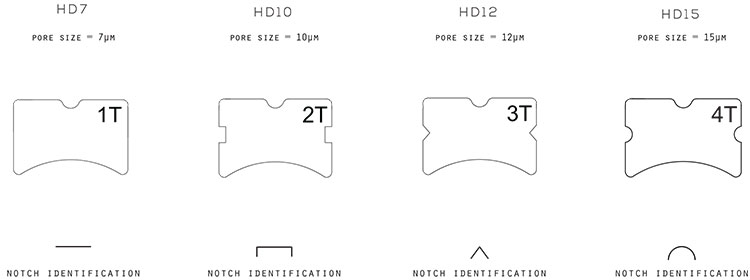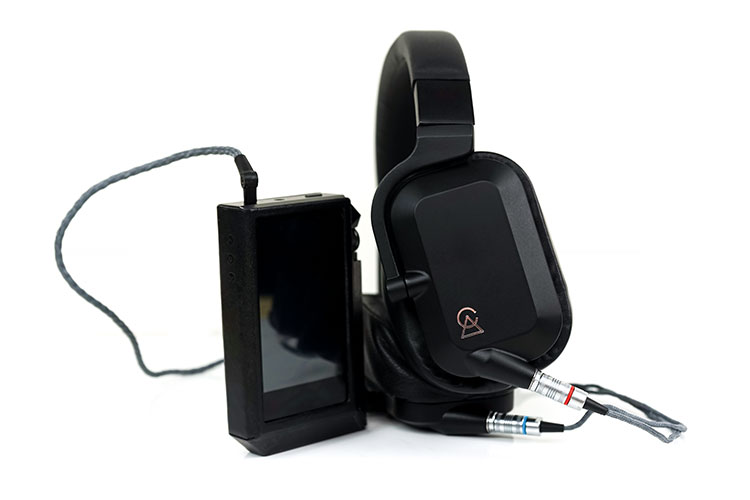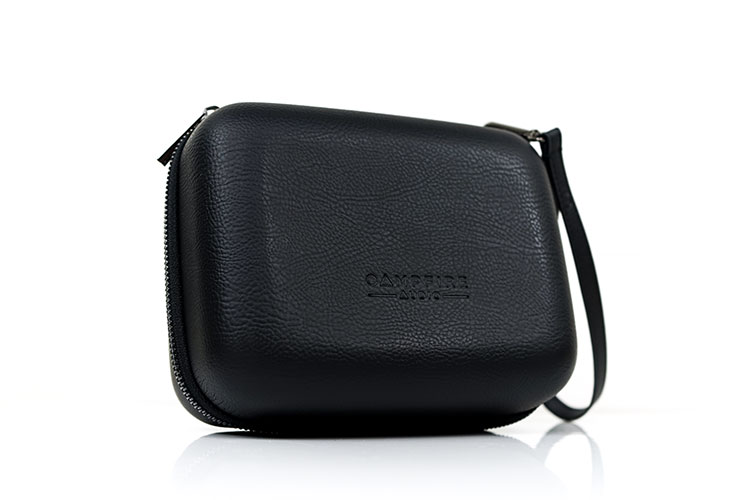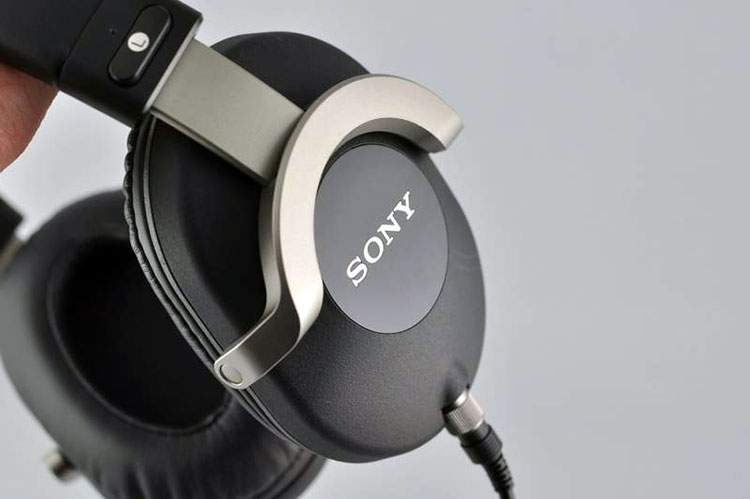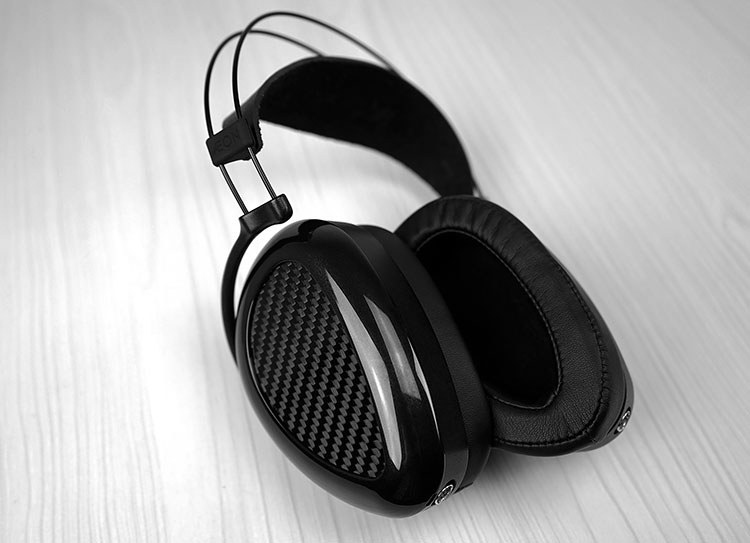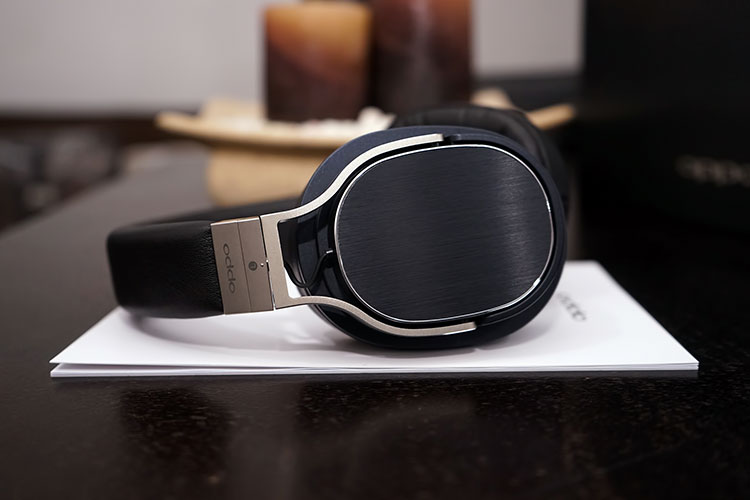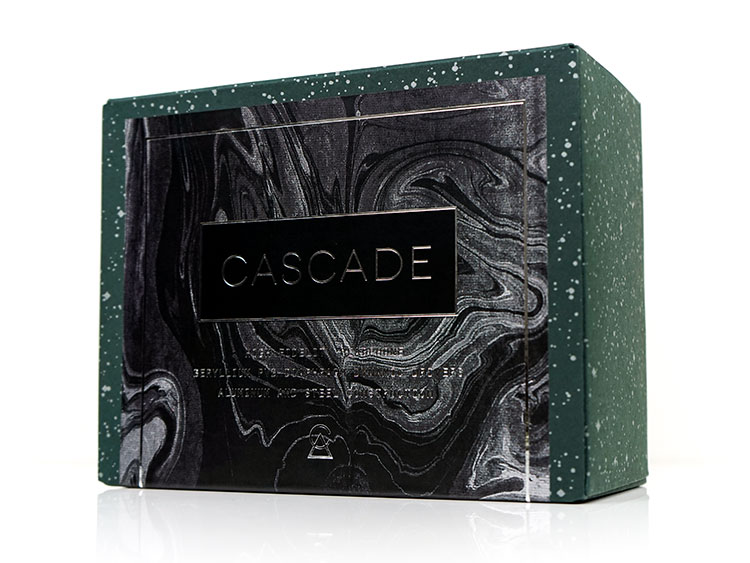Sound Impressions
Tonality & Presentation
Note: Core sound impressions are done without any filters being applied and using the stock cable.
Time. You need to give the Cascade a fair bit of burn in to allow it to settle it down. Out of the box, the bass is fairly dominant compared to the rest of its FR. I do hesitate to call this a basshead signature but it conjures an image of a boomy ‘always on’ dark sound. Even in the early stages of burning it in you get a strong perception that the Cascade low-end has plenty of control and definition on offer.
Once burned in, around 100 hours plus at least, the Cascade will deliver a musical, fun signature with plenty of low-end power. You also get a fairly natural sounding midrange with a bump around 1-2k for some additional vocal presence. The presentation is topped off with a clean and clear lower treble signature with some sparkle around 5k and 10k.
Tonally, I do not find it over-cooked in terms of warmth. True enough, you get some power and considerable elevation around 100Hz. However, it does seem to dip significantly before it hits the lower mids preventing it from sounding boomy or carrying excessive warmth into the lower mids. As result, instrumental timbre on the Cascade is more natural sounding and not overly rich or heavy-handed.
Soundstage
That dip in the Cascade’s lower-mids from around 500-800Hz means instrumental positioning is a little behind a slightly elevated vocal presence. However, it does deliver a nice sense of clarity and separation and the vocal is not too far forward to overly skew the staging. A couple of key factors that contributes to what I consider to be an above average soundstage for a closed headphone.
Staging depth is slightly greater than height though I never got a sense headroom was an issue. The width is ok actually, on par if not better than the AEON Closed for sure. However, what impresses me most about the Cascade presentation is the level of articulation and precise imaging it can deliver within that soundstage. Nothing is smoothed over, veiled or overly euphonic. The Cascade does precise detail very well indeed.
Bass
It is the star of the show no doubt but cast aside any preconceived notion that this is a one-note wonder because there is so much more to the Cascade low-end than just pure slam. The extension, for one thing, is really good. There is a tiny bit of drop off sub-50Hz so it not L-shaped and not as physical for me as the Vega was.
However, the rise in energy from 30Hz is palatable and only starts to drop around 100Hz meaning you do get plenty of rumble and a degree of warmth that adds a nice level of texture and body to its low-end.
From 100Hz to 500Hz the response falls away fairly quickish by maybe up to 10dB into the lower mids. This means it carries only a hint of warmth up into the midrange and prevents the sound from becoming boomy or muddy. Lower range instrumental clarity is very good as a result and you do get a palatable sense of above-average detail and articulation.
Mids
The Cascade mids have a mild bump around 1-2k of maybe around 2-3dB. Vocal pitching will sound relatively further forward than lower midrange instrumental positioning and male vocals. That bump is not too extravagant so the Cascade vocal performance will not come across as shouty or hard sounding.
Instead, you get more of a natural sounding pitch with decent texture and a relatively smooth attack. This is not an inherently sibilant signature by the way. Rather the Cascade will simply not mask it in bright sounding recordings. If it is there you may hear it but it will not be overly emphasized.
Treble
Upper mids to lower treble dip a tiny bit but then elevates around 5-7k by a few dB and again at 10dB to 12dB for a bit of air and sparkle. Higher pitched percussion timbre has a satisfying level of articulation and presence and to be honest you will be hard-pressed to find any harshness in its performance.
The final octave might lack a bit in terms of extension and presence but not sufficiently to kill any perceived headroom typical on some other closed headphones. Overall, this is a controlled treble response with just enough energy to add some nice contrast to the heavy hitting low-end but not too much to sound sharp or tizzy.
Filters
Campfire Audio have supplied 4 filters to fine tune the sound of the Cascade. To use them you simply detach the pads and insert them over diametrically matching gap on the underside of each pad then put them back on. Campfire describes them as attenuating mids and low-frequency responses in varying amounts with the lowest number filter (1T) attenuating the least and the highest (4T) attenuating the most.
For your reference, a tuning guide has been supplied in the accessory kit for easy installation guidelines and they refer to them as follows:
- 1T (HD7) – This filter will darken the signature in favor of a fuller sounding and more dominant bass and lower mids response. The sound signature will come across as quite smooth though with the loss of some treble extension and sparkle takes away a fair bit of air.
- 2T (HD10) – A step back from 1T with better treble extension and more air and a more open midrange. Bass response is still more weighted than the stock signature and warmer sounding.
- 3T (HD12) – A full-bodied richer tone and a lush but spacious midrange. Treble is a bit softer than 2T or 4T so those needing more air I advise switching to one of those.
- 4T (HD15) – Slightly more balanced version of 3T with a full-bodied low-end but this time with more sparkle and treble extension.
Matchability
Scaling Potential
The Cascade measures in at 38Ω and 100dB SPL. On paper, this is a medium efficiency portable headphone and if you plug it into a decent smartphone you will get a relatively good response and a black background. If that is all you have it won’t sound horrible.
However, this beryllium coated PVD driver can scale with better sources and if you want to hear it really sing I suggest you experiment with good power either from a DAP, portable amp or even a desktop amp.
Portable Amping & DAPs
For example, coming straight out of an LG G6 amp I get a nice level of resolution and generally an accurate FR but the definition, particularly in the bass response is much softer than a dedicated portable amp can offer such as the RHA L1 or ALO’s own RX amp.
I do have a preference between the RX and the V5 depending on what I am playing. Something about the way the RX delivers dynamic range at both ends of the FR that is just so impressive with the Cascade’s soundstage Pick the V5 if you want your Cascade mids a little sweeter with a euphoric timbre and a bit more vocal emphasis.
Also, in general terms, the V5 has a little bit more power than the RX using the Cascade using LO from DAPs. All portable amps, by the way, delivered a perfectly black background when paired with the Cascade.
DAPs
They do color the sound depending on which you choose. Power does seem to have a way of controlling how tight the low-end is with the Cascade but there is nothing wrong with letting loose now and then and the likes of the HiBy Music R6 will produce a thunderous low-end. Much more so than the liked of the DX series (200 and 150) from iBasso or the AK series (240 and 380).
The DX150 will retain a warmer signature with a full sounding low-end but it is a little politer and softer sounding than the R6 using the AMP 6 card. I would revert to the DX200 and the Amp 1 or Amp 5 cards just for a little more dynamic range and snappiness using the Cascade.
If you are rocking a Sony 1Z you will get a more resolving signature, better bass control, and a more immersive soundstage, particularly if you opt for the SXC 8 4.4mm balanced cable option.
Desktop Amping
Going up a level to a desktop scenario and you will get incremental improvements in the Cascades performance. A 1W tube amp such as the Cypher Labs Duet does a really nice job of even further tightening up the low-end. Compared to a smartphone the signature is now far snappier and the imaging much more holographic sounding.
And on we go with the Formula S from Xi Audio spitting out a hefty 6W into 16Ω from a single-ended Class A design. Now I may not get a huge amount of volume wiggle room but I get enough and whats more, the Cascade sound absolutely magnificent. Clean, quick and resolving with just the right amount of bass control.
You want to hear just how potent this driver can be at full stretch then give it some real power. Mind you, I should not have been surprised given how the likes of the Vega and to a lesser extent the Dorado can absorb and scale. The Vega is an IEM that can scale and the Cascade is not far behind.
Select Comparisons
Sony MDR-Z1000
$549
Technical
The Z1000 is a supra-aural or on-ear dynamic river headphone released back in 2011 if memory serves me correctly. They seem to have discontinued it officially, however, you can still pick it up close to its SRP on Amazon US.
The form factor is broadly in line with the Cascade only it is substantially lighter at 270g compared to the Cascade at 383g. Much of that is to do with the generally heavier and thicker build of the Cascade as well as thicker and slightly heavier pads. The Z1000 is built from magnesium so it is pretty solid in its own right.
However, the Cascade can fold flat and inwards with a 90 and 180-degree rotational capability whereas the Z1000 is quite rigid with only a small amount of pad swivel for additional comfort adjustment. The Cascade can get much smaller than the Sony when folded.
The Z1000 is rated at 24Ω and 108dB so it is a little more efficient than the Cascade for weaker sources. However, it does not scale as well as the Cascade with more powerful amping signals.
Performance
The Z1000 has a fairly musical signature also though its low-end is not quite as heavy hitting or as well extended in terms of sub-base presence. I actually believe it follows a similar curve from 30-100Hz it just has a few less dB elevation than the Cascade and will sound a touch politer as a result. It also starts rising from 300Hz until about 1-2k so the lower mids have a bit more warmth to them than the Cascade.
The Cascade lower-mids are more dipped from 500Hz to 800Hz so instrumental timbre is a little cooler, cleaner and further behind vocals. The Z100 has a richer lush sound to its midrange timbre. Both the Z1000 and Cascade have a bump around 1-2k that gives the majority of vocals are nice and clear and slightly forward signature. As a result, the Sony staging is going to be further forward and more intimate sounding than the Cascade. The Cascades tuning pulls back the mids a bit more making the soundstage perceptibly larger for that excellent imaging to work its magic in.
Treble on the Z1000 is more uneven in response to the Cascade though to be fair it is not harsh or peaky sounding. It does have this suck out from 3-5k that tends to take a bit of sting out of the upper mids and percussion and prevent it from sounding hard to my ears. It does peak quick quickly instead from 7-10k perhaps a little more so than the Cascade so it may seem a bit brighter or has more sparkle. Using the 4T filter will give the Cascade treble a bit more prominence though and closes the gap.
MrSpeakers AEON
$799
Technical
The AEON is a closed back planar magnetic headphone with the exact same price point. In some superficial way you could argue that they are direct competitors but in truth, I do not see them quite like that. The AEON also takes a tall cup shape route though taller than the Cascade making it more of a snug but well-fitting circumaural headphone as opposed to the on-ear Cascade.
Both use a detachable cable system, half hinge gimbal designs and all come packaged in a neat little faux leather carry case. The AEON, however, does not fold like the Cascade so the general size of the case and cans inside are a bit bigger than the Cascade.
The weight of the AEON though is much lighter with its use of carbon fiber and low profile but very strong nitinol headband materials. The weight is slightly lighter also at 340g compared to the Cascade’s 382g.
Both can suck up a lot of power but for differing reasons. For the AEON it needs good power to sound optimal, to sound good and be properly driven. At 92dB SNL it is not that efficient though it will not collapse like a deck of cards on a DAP. The Cascade sounds pretty good on weaker sources but can scale and sound even better on amps of varying levels of power.
Performance
Overall both have a signature that places a little emphasis on the bass and treble though in varying quantities. Overall the Cascade is the warmer and the more aggressive of the two, particularly in the low-end. The AEON also has tuning pads that attenuate the top-end a little though not as many, just a single set to firm up the low end and attenuate the top end slightly.
The AEON has more of a raised sub-bass presence in comparison to its mid-bass with the Cascade’s sub-bass just tailing off ever so slightly sub-50Hz in comparisons to its stronger mid-bass. As a result, the AEON sub-bass rumble and definition is better but the Cascade is more physical and hits a lot harder.
Both have a post 100Hz dip though the AEON is a bit more pronounced without the tuning pads. With the tuning pads, you get a bit more mid-bass warmth on the AEON to offset that dip a little.
Both have a lower midrange that sits behind a slight 1-2k bump with a more forward vocal range and instrumental positioning just behind. Like the Cascade, the AEON has excellent staging qualities and both are spacious sounding for closed back cans.
Treble on both is slightly raised but it is more forward sounding on the AEON. You will get a feel the AEON is a brighter sounding headphone as a result with more post 5k energy and emphasis than the Cascade’s more relaxed top-end. Again, you can use the AEON pads to tone it down but I do like the airier signature of the AEON better in stock mode.
Oppo PM-3
$399
Technical
It is a shame that Oppo Digital closed down recently. I know their team quite well and worked with them over a number of years including their headphone design team. The PM-3, the last of their planar headphones was perhaps their thinking at its most refined level. A lightweight closed-back portable planar that was relatively easy to drive. It had a lot of fans.
Compared to the Cascade it also a supra-aural headphone but much smaller and lighter at 320g. Despite its relatively smaller form factor, the pads on the PM-3 have similar inner dimensions to the Cascade’s pad openings. The big difference is the thickness of the pads. The Cascade pads are much deeper and made from better quality sheepskin leather. Ironically though the PM-3 has better isolation.
The PM-3 is rated at 26Ω and 102dB and on paper, it should be a little easier to drive than the Cascade. However, in real-world testing, the Cascade was the easier of the two to drive and sounded more engaging and dynamic than the PM-3 at the same volume levels.
Performance
The PM-3’s has a solid but more linear bass response. It is still elevated by most standards but not as physical sounding as the Cascade. It does have a tiny bit of roll off in its sub-bass like the Cascade but it is not as elevated in the mid-bass so it doesn’t have the same level of impact either.
Lower mids have a gentler dip so they sound a little fuller than the Cascade’s instrumental timbre but not as well separated. Imaging is also a little ‘docile’ compared to the livelier and more spacious sounding Cascade performance.
Treble on the PM-3 is roll-off in comparison to the Cascade and lacking in a lot of air. The Cascade is not the most extended but it will offer more headroom and air than the PM-3. The PM-3 drops quite quickly post 2-3k with only a minor bump 6-7k and 10k and much less than the Cascade’s more energetic top-end.
Our Verdict
Initial impressions will have you thinking this is a basshead can and to some extent, I agree when you first hear it. However, throw some power into that really good beryllium coated PVD driver, burn it in for a bit and you will hear something a lot more complex and impressively spacious for a closed-back dynamic headphone. The bass is still strong, still aggressive and physical but it is not bloated or lacking in definition when properly driven. Mind you, it sounds ok actually out of a smartphone and won’t fall apart like some planar equivalents.
The filters are nicely done and more subtle than full-on. It has been done before but I like the fact CA have thrown in 4 options as opposed to one or two as well as a very easy cup detachment system.
It is also robust, minimalist and cool looking with decent pad inner openings and yummy soft sheepskin pads. The vibe right down to the packaging is consistent with their IEMs, just a whole lot bigger.
What would I change? Not a huge amount to be honest. Perhaps the levels of isolation are not as high as the Sony Z1000 or PM-3 despite the thicker pads but I do wonder if that helps with its good staging quality, hard to say. The pressure point, on the top of my head, is not ideal either, I would like just a little bit more distribution and less focus on the middle of my scalp. Your mileage may vary on that one.
Apart from that, the freshman Cascade is a solid, confident and altogether fantastically musical sounding entry to the portable headphone market from Campfire Audio.
Cascade Technical Specifications
- 5Hz–33 kHz Frequency Response (attn -26dB)
- 100 dB SPL/mW Sensitivity
- 38 Ohms @ 1kHz Impedance
- 13.5 oz (without cable) or approximately 383 g
- Earpad Dimensions Outside OD approx – 2.75-inch wide x 4 inches tall
- Inside ID is approx – 1.5-inch wide x 2.5 inch


